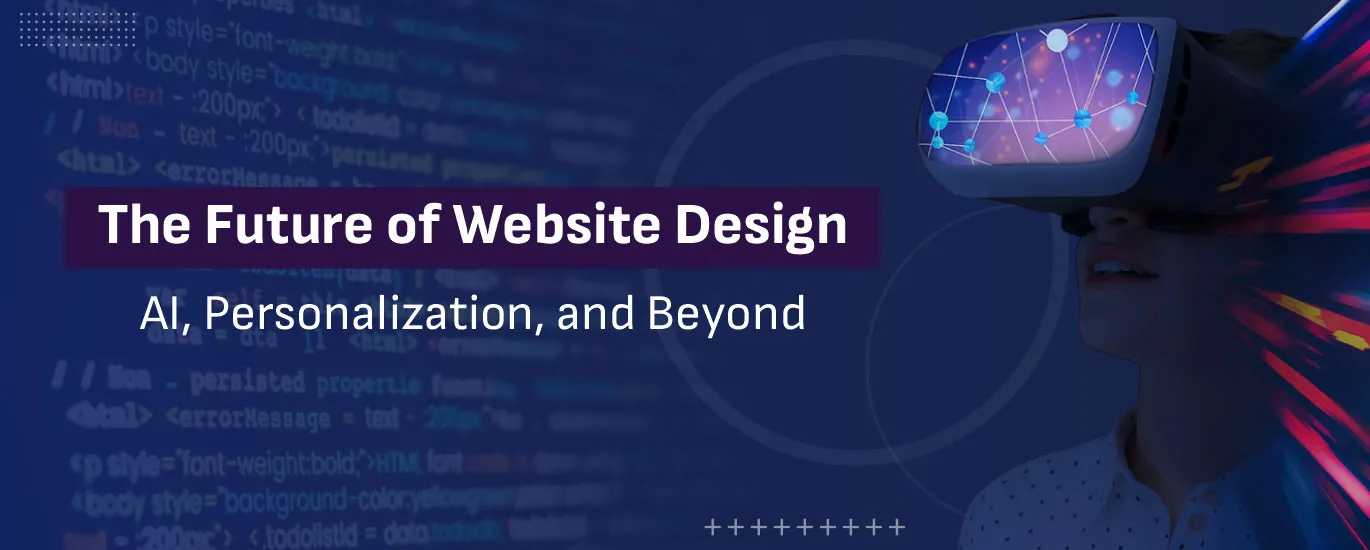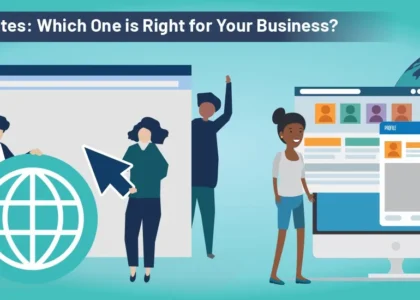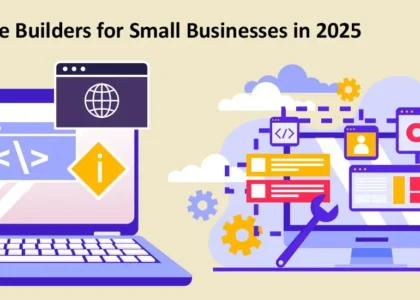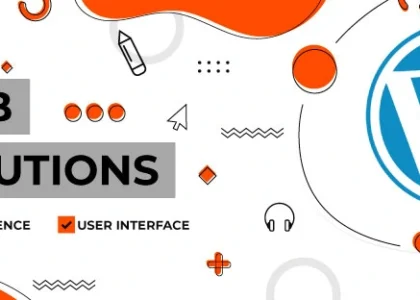Website design is no longer just about aesthetics, it’s about creating experiences that feel intelligent, adaptive, and human-centered. As we move into 2025, the future of website design is being reshaped by artificial intelligence (AI), hyper-personalization, and fast-evolving digital expectations. Business owners, web designers, and digital marketers must understand these shifts if they want to stay competitive.
In this blog, we’ll explore the impact of AI on website design, how personalization is redefining user experience, and the biggest web design trends 2025 that are shaping the future.
Why the Future of Website Design Matters
The digital world has become the first point of interaction between businesses and their customers. Whether you’re a startup founder or a marketing director, your website is often the front door to your brand.
- User expectations are higher than ever: Visitors expect websites to load fast, feel intuitive, and offer experiences tailored to them.
- Competition is fierce: A generic website won’t cut it in 2025. Businesses that invest in advanced design and personalization will stand out.
- Technology is advancing rapidly: From AI-driven chatbots to predictive design tools, what once felt futuristic is now standard practice.
Simply put, the future of website design is about blending creativity with cutting-edge technology to meet user needs proactively.
The Role of AI in Website Design
Artificial Intelligence is no longer a buzzword it’s a practical tool reshaping design workflows and user experiences. Let’s break down the impact of AI on website design and why it’s central to the next generation of websites.
1. Smarter Website Builders
Platforms like Wix, Squarespace, and Framer are integrating AI-powered design assistants that can generate layouts, select color palettes, and even write website copy. These tools allow businesses to build professional websites faster without sacrificing creativity.
Example: Wix’s AI-powered “ADI” tool can design a website within minutes by asking users a few questions about their business.
2. Personalized User Journeys
AI analyzes user behavior in real time tracking clicks, time spent on pages, and even purchase history. This data helps websites adapt dynamically.
- An e-commerce store might recommend products based on a customer’s browsing history.
- A B2B website might highlight case studies relevant to the visitor’s industry.
This kind of personalization is only possible because of AI in website design, making user experiences more relevant and engaging.
3. Predictive Design and Automation
AI is now being used to test and improve design elements automatically. Instead of manually A/B testing every CTA button or landing page variation, AI tools can run multivariate tests at scale and deliver insights within hours.
Example: AI-driven platforms like Adobe Sensei are helping designers predict which layouts or visuals will perform best based on historical data.
Personalization: The Heart of Modern Website Design
Personalization is no longer optional it’s expected. Visitors in 2025 want websites that feel like they were designed just for them.
Why Personalization Matters
- Improves engagement: Personalized recommendations keep users exploring.
- Boosts conversions: A study by Epsilon found that 80% of consumers are more likely to purchase when experiences are personalized.
- Builds loyalty: Users return to sites that remember their preferences.
Real-Life Scenarios
- E-commerce: Amazon’s product suggestions powered by AI personalization drive a significant portion of their revenue.
- Streaming Services: Netflix and Spotify design interfaces around personalized recommendations, keeping users engaged for longer.
- Corporate Websites: B2B companies use personalization to show industry-specific solutions to visitors, shortening sales cycles.
The future of website design will revolve around this level of personalization making every interaction feel meaningful.
Web Design Trends 2025
So, what exactly will the web design trends 2025 look like? Here are the biggest shifts to watch.
1. AI-Powered Content Creation
Websites will increasingly use AI to generate blog posts, product descriptions, and even video scripts tailored to user behavior. Expect websites to adapt their tone and content based on who’s reading.
2. Voice-Activated Interfaces
With the rise of smart assistants, websites will optimize for voice-first interactions. Imagine browsing a product page simply by saying, “Show me similar shoes in black.”
3. Minimalism + Micro-Animations
Designs in 2025 will favor clean, minimal layouts but enriched with micro-animations (like hover effects, scroll-triggered visuals, or subtle transitions) that add interactivity without clutter.
4. Accessibility and Inclusive Design
Future-ready websites will prioritize accessibility features like voice narration, adaptable text sizes, and color contrast settings. Businesses that ignore inclusivity risk losing a significant user base.
5. Hyper-Personalized Landing Pages
Instead of generic landing pages, users may see content that adapts in real time. For example:
- A first-time visitor sees educational content.
- A returning customer sees loyalty offers.
- A prospect from healthcare sees industry-specific solutions.
Future Outlook: Beyond AI and Personalization
As powerful as AI and personalization are, they’re only part of the bigger picture. The future of website design will also be shaped by emerging technologies like:
- Augmented Reality (AR): Imagine trying furniture in your living room virtually before buying.
- 3D Design: More websites will use immersive 3D visuals to create “wow” moments.
- Sustainability in Design: Eco-friendly hosting and lightweight websites will become important as users demand greener digital practices.
These advancements, combined with AI-driven personalization, will create a web ecosystem that feels more human, intuitive, and efficient than ever before.
Conclusion
The future of website design is dynamic, intelligent, and deeply user-focused. With AI in website design driving smarter workflows, personalization making experiences relevant, and web design trends 2025 pushing creative boundaries, businesses that adapt now will lead tomorrow.
For business owners and digital marketers, this isn’t just about having a pretty website it’s about building digital experiences that connect, convert, and endure. The impact of AI on website design shows us that the web is no longer static; it’s alive, responsive, and evolving.
As we move beyond 2025, the most successful websites will be those that combine technology with empathy sites that feel less like machines and more like human guides. Now is the time to embrace these trends and step confidently into the future of digital design.




